UNESCO World Heritage Site, Urbino is not your mainstream tourist destination. Embedded amidst the Metauro and Foglia Valleys in Marche region of Italy, south west of Pesaro, this picturesque medieval hillside town is emblematic of its 15th century Renaissance glory. As we drove along the winding roads in the valley, the grand sights of the Ducal Palace and Duomo surrounded by its brick and sandstone wall greeted us from a distance.
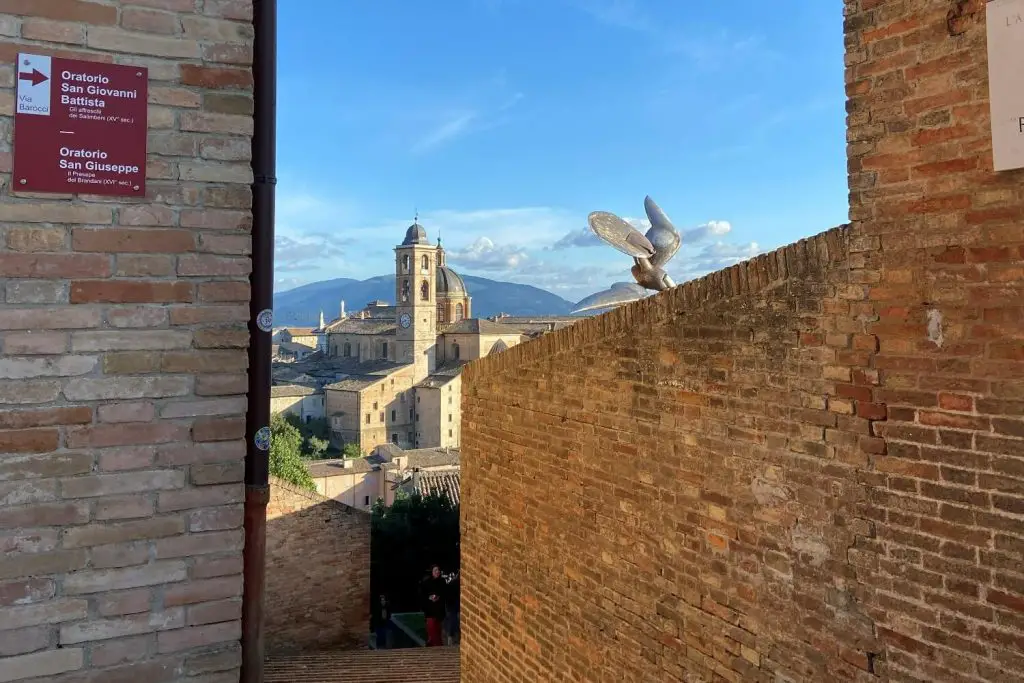
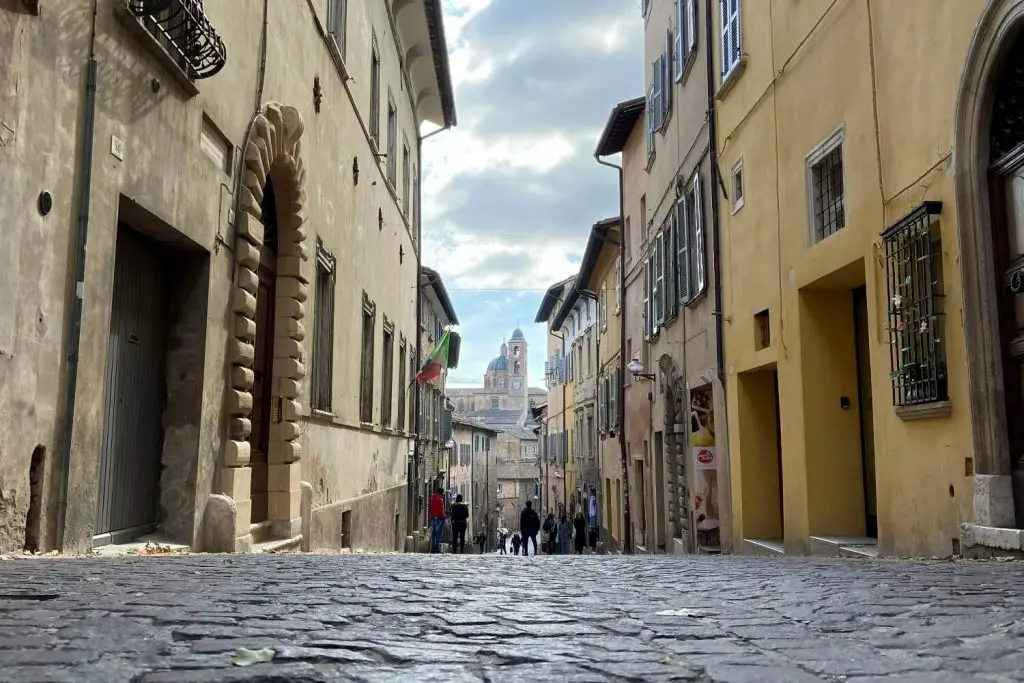
Like any borgo in Italy, modern residentials built outside of the medieval town strikes a stark contrast to the walled section. Most of the buildings in the ancient town were built in the 17th and 18th centuries. Walking around Urbino is like hiking on hilly terrains. Be sure to wear walking shoes with a good grip as the roads are not levelled and are typical cobblestone made.
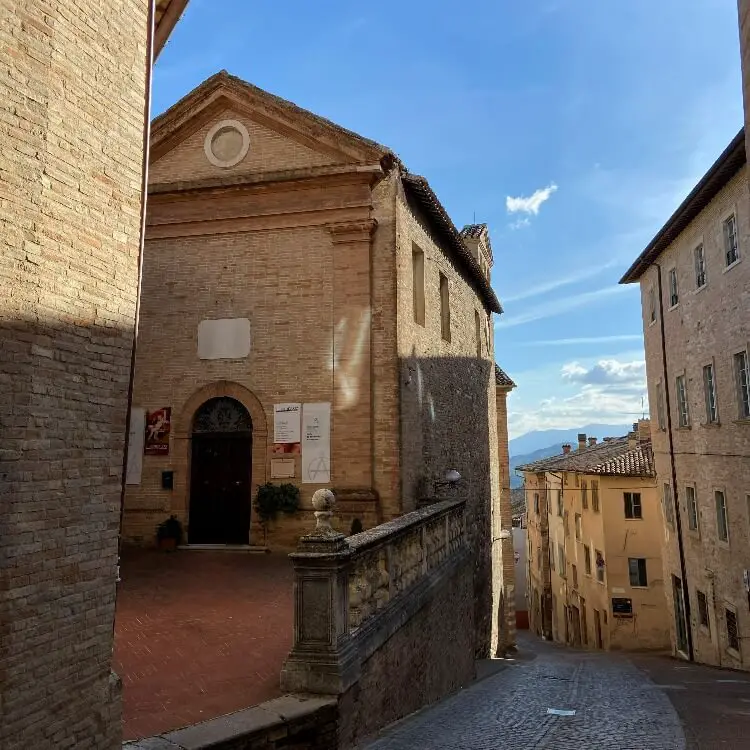
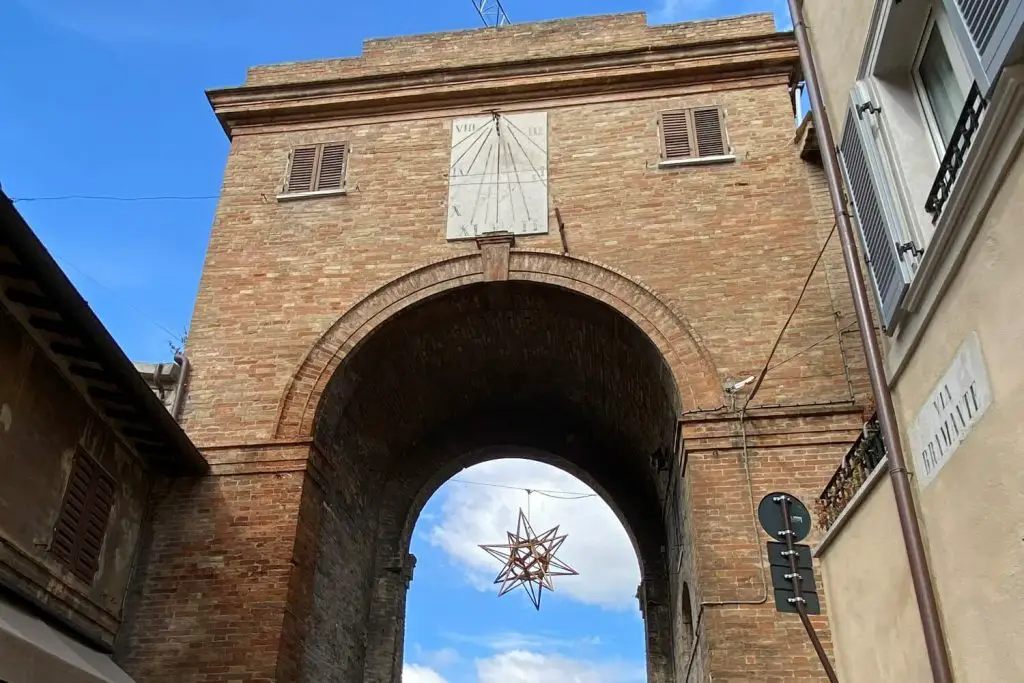
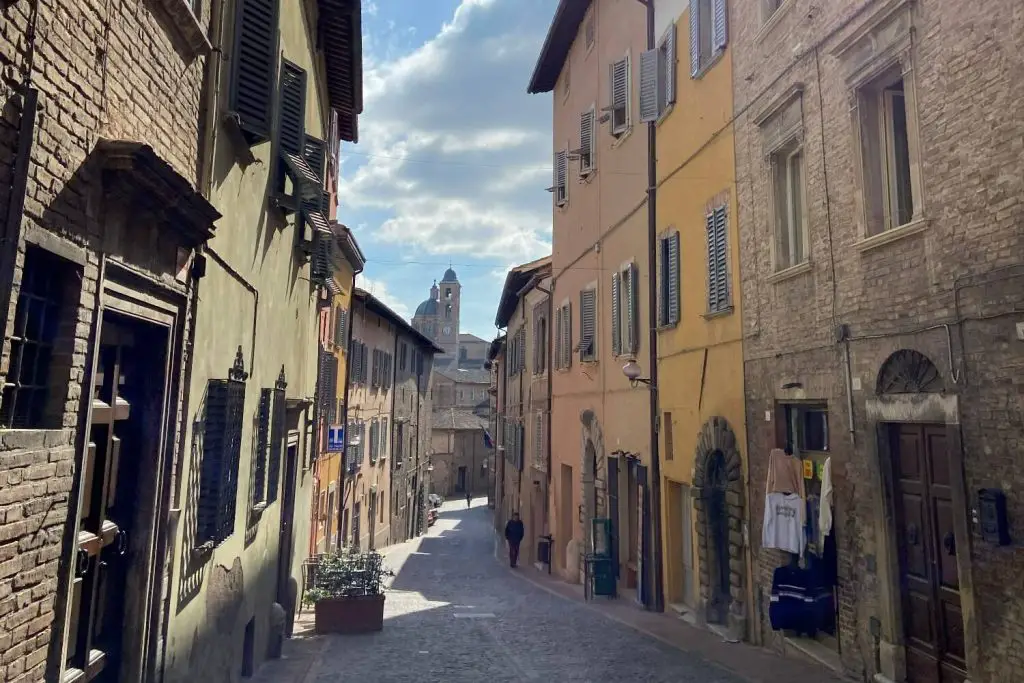
What is Urbino Italy famous for?
Founded by the Umbrians, an ancient people of Italy, Urbino was subsequently occupied by the Etruscans, Celts, and Gauls and the Romans. During the Renaissance era, it became one of the major cultural centres of Europe, greatly attributed to the influence of the Montefeltro family, reaching its utmost splendor in the 15th century. The Duke of Montefeltro, Frederico Montefeltro who was a mercenary general and very well-versed in music, mathematics, astronomy, geometry, Latin and the arts, turned Urbino into an important Renaissance centre of the arts. Through his tenacity and passion for culture, Urbino obtained monumental and artistic superiority, with its influence spreading powerfully throughout Europe, and attracting the crème de la crème of Italy’s Renaissance great artists, architects, mathematicians and scholars.
Among many famed humanist who was born or made their famed in Urbino, artist and architect Raphael and architect Donato Bramante were born in Urbino in 1483 and 1444 respectively. Raphael’s (also known as Raffaello Sanzio) father, Giovanni Santi was court painter to the Duke of Urbino. Together with Leonardo da Vinci and Michelangelo, Raphael formed the trinity of great masters of the era. Donato Bramante, also known as Donino or Donnino, was the architect who introduced the High Renaissance style in architecture.
With about 24,000 population these days, cliques of young students can be seen everywhere hanging out in kebab shops and cafe bars in this walled town. That’s because Urbino hosts the University of Urbino, founded in 1506. On the Saturday we visited, we saw many students on picnic mats at the Fortezza Albornoz, a large compound in front of an ancient fortress with a unblocked elevated view of the palace and duomo.
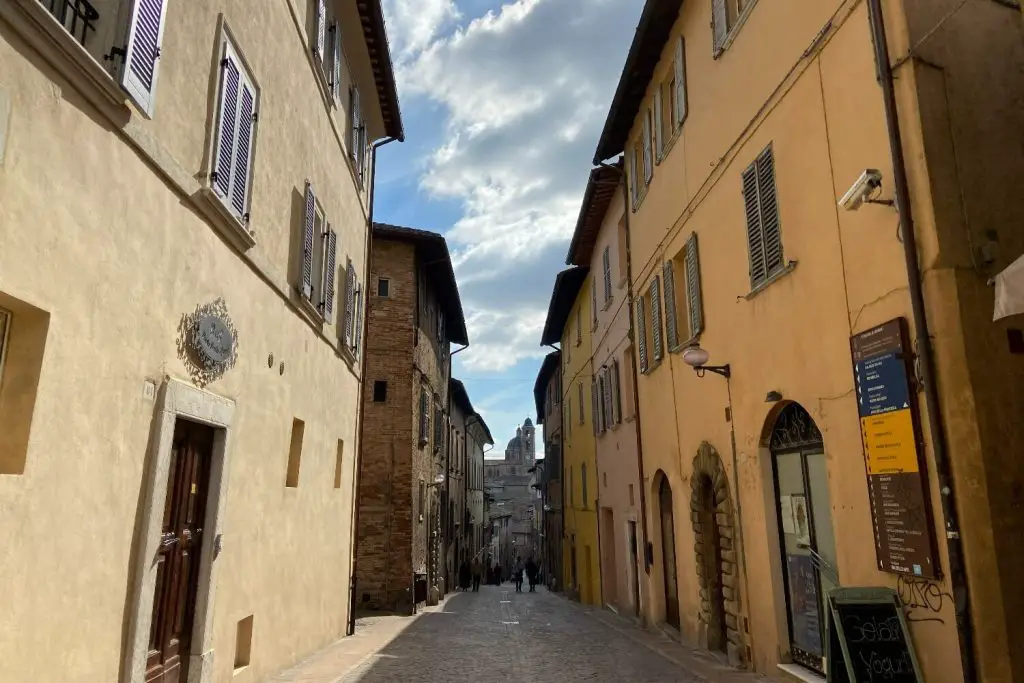
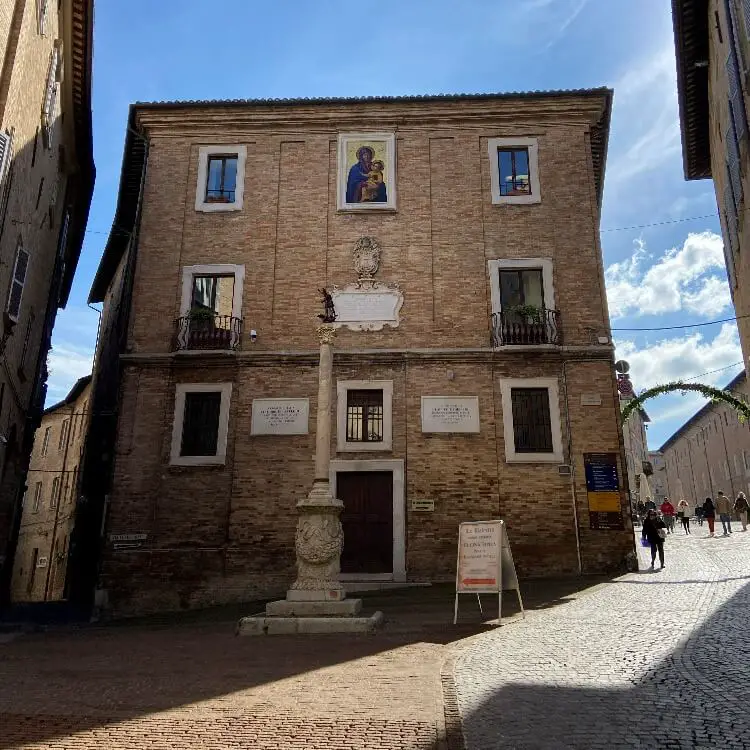
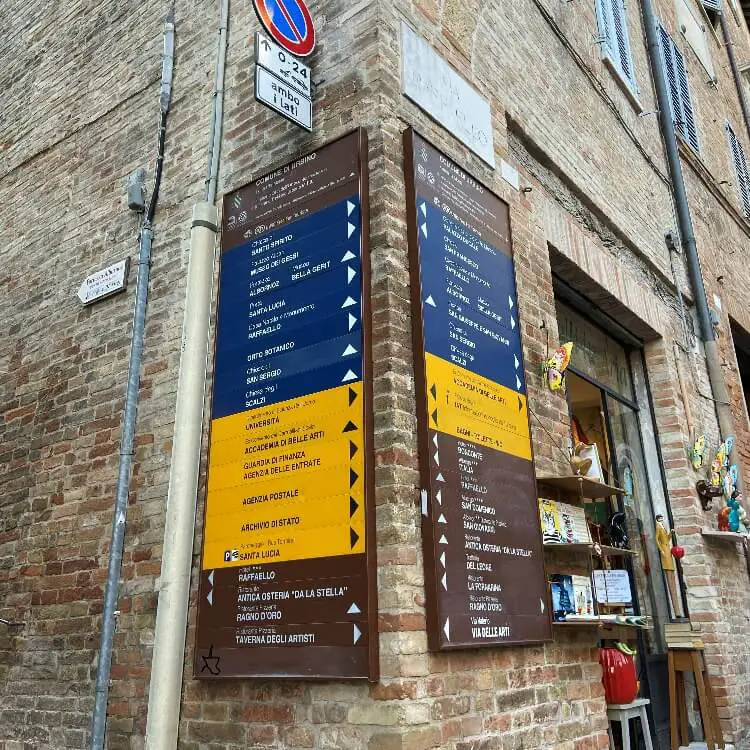
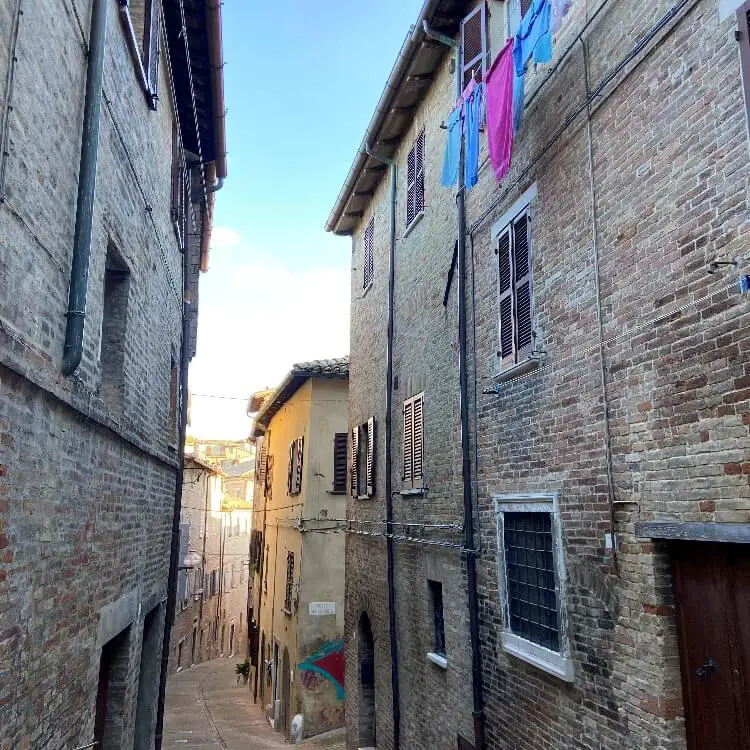
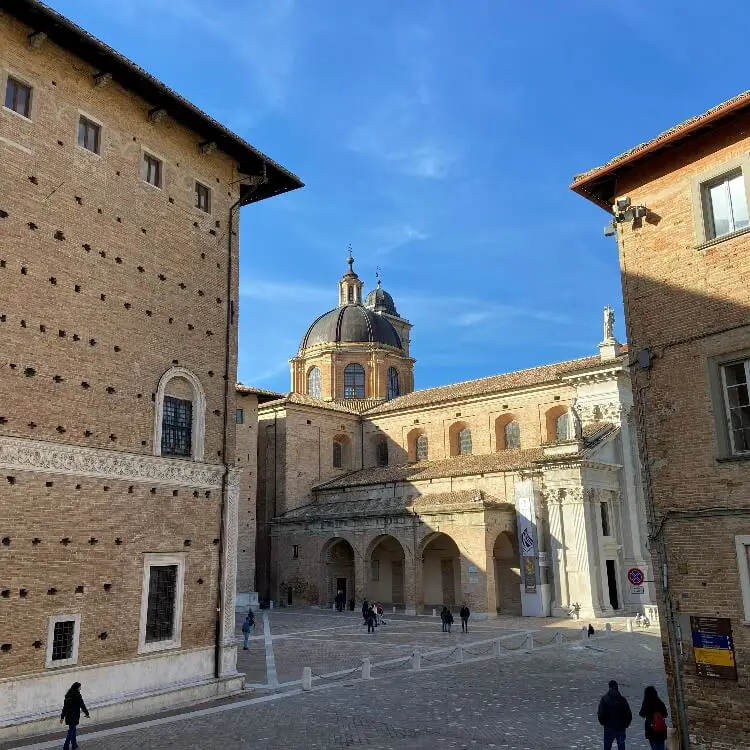
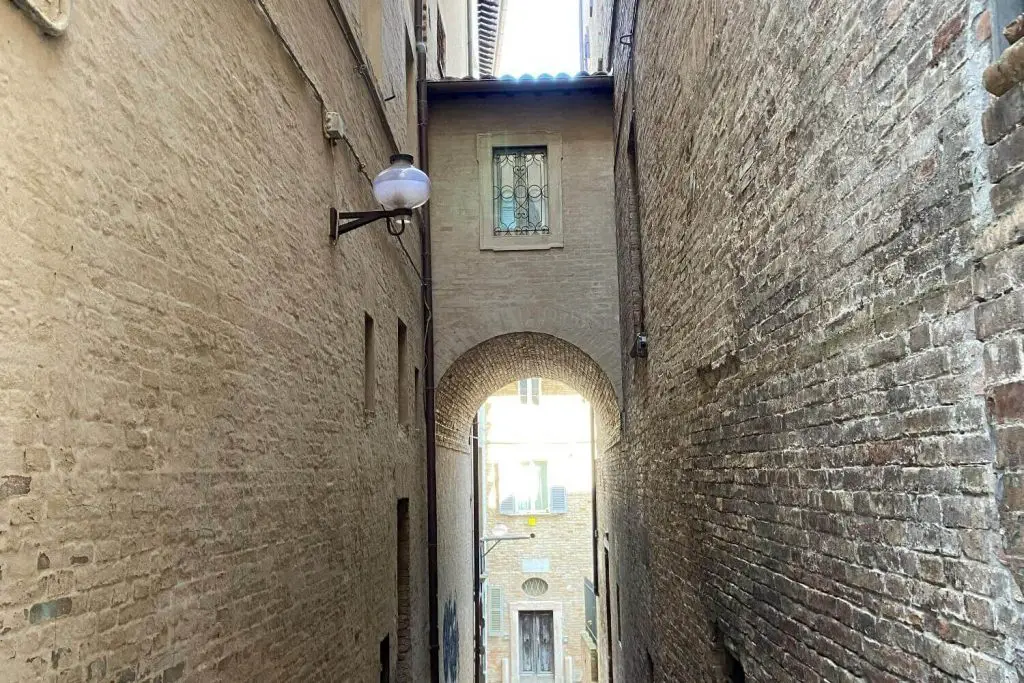
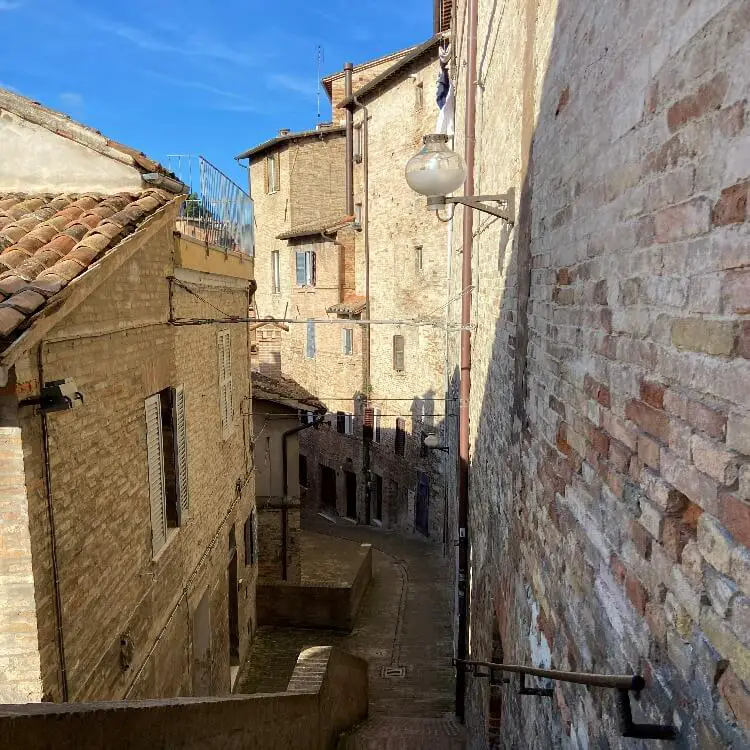
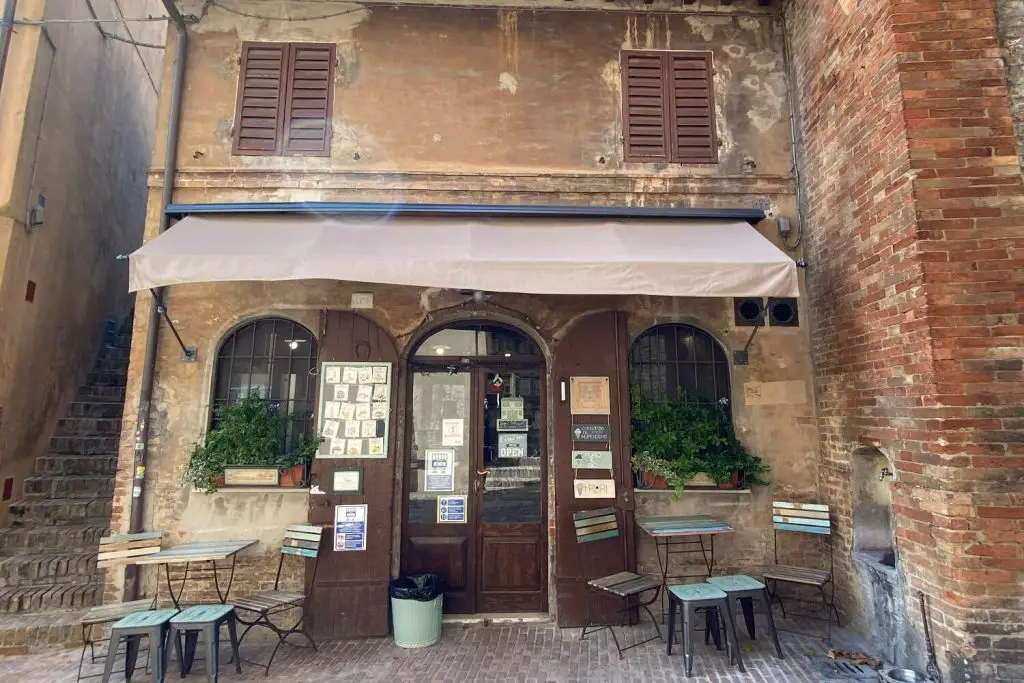
How do you get to Urbino Italy?
We drove for about 1.5 hours to reach Urbino from Civitanova. The closest towns to Urbino are Pesaro and Fano, and there are train stations with trains coming from Milano, Bologna and other parts of Italy. The nearest airports are in Bologna and Ancona. There are also buses from nearby town Pesaro.
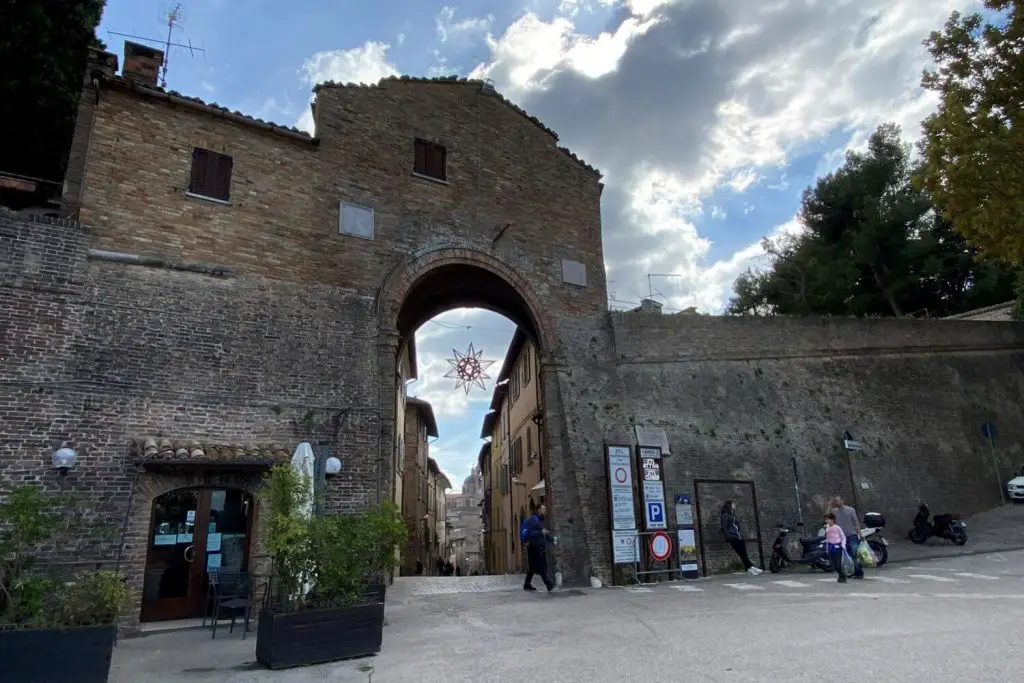
Urbino has a medieval wall with four gates. We found some parking by the hour just outside one of the gates. The big entry square, Piazza Mercatale, holds an underground garage where buses and cars can stop and park.
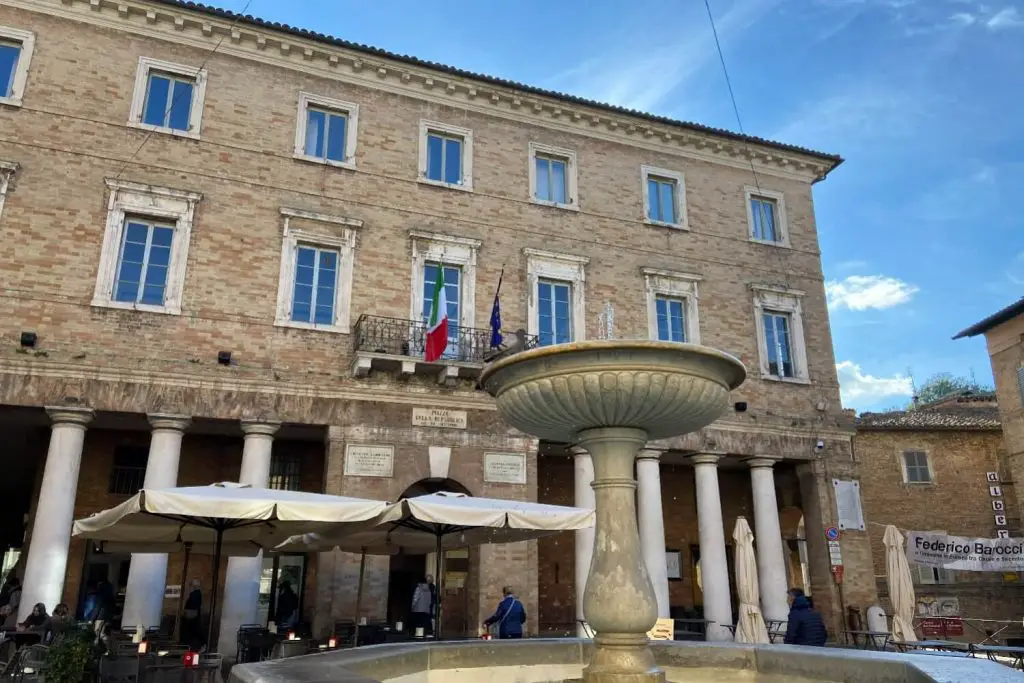
Is Urbino worth visiting?
Despite having such a rich history, the town is really not that big and definitively walkable. We spent about 5 hours there, visited some places, had lunch and continued to explore the town. Arts and history lovers will love and appreciate this town, just imagine walking on the streets and being in buildings that great men like Raphael and Donato once walked on. Below is a list of places we visited, in order of preference.
Palazzo Ducale (Ducal Palace)
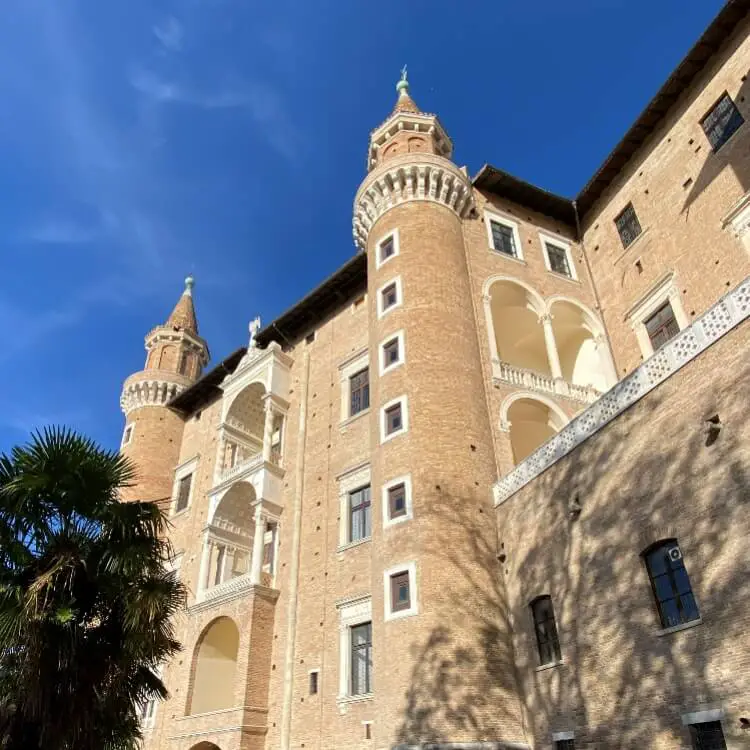
The most significant architectural masterpiece in Urbino—the Ducal Palace built in the mid 1400s. It’s a monument to how one man, the Duke of Montefeltro, brought the Renaissance to his small town. The Galleria Nazionale delle Marche (National Gallery of the Marche), housed in the palace, is one of the most important collections of Renaissance art in the world, featuring important works by artists such as Raphael, Van Wassenhove (a Last Supper with portraits of the Montefeltro family and the court), a late Resurrection by Titian, and other 15th century artists.
Cattedrale di Santa Maria Assunta
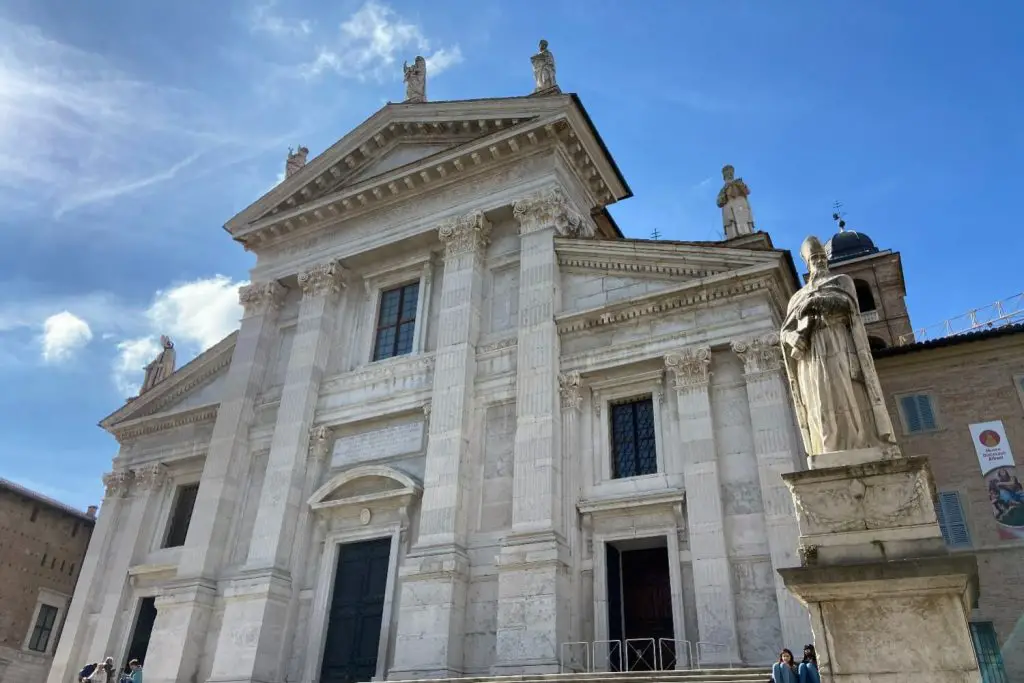
The Urbino Cathedral was rebuilt in the early 19th century in neoclassical style. Sitting in front of a large square, its grand presence is highly visible. The interior obviously went through a recent overhaul with its clean and modern white and pale green colours.
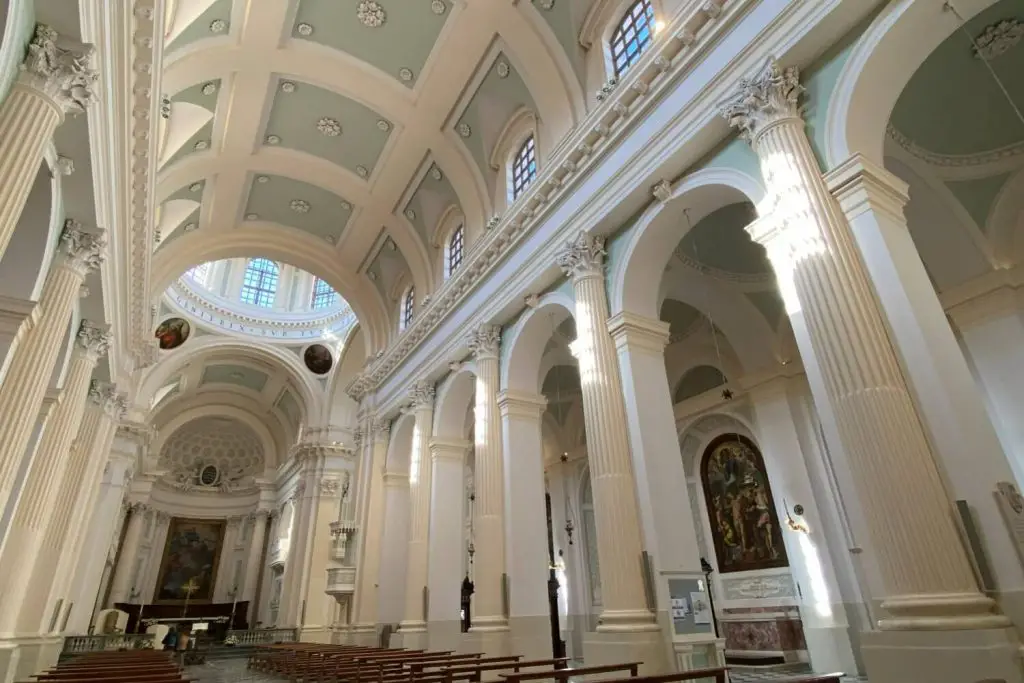
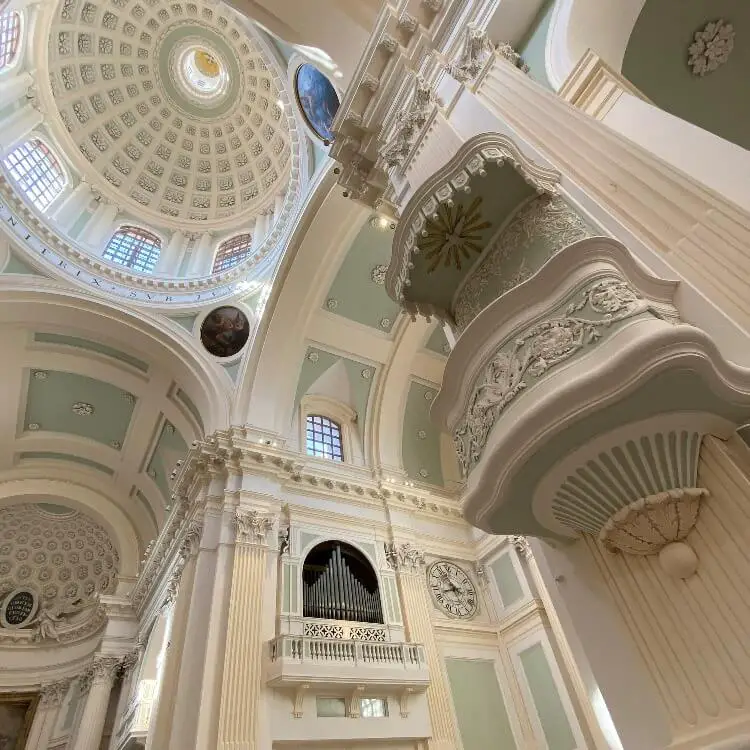
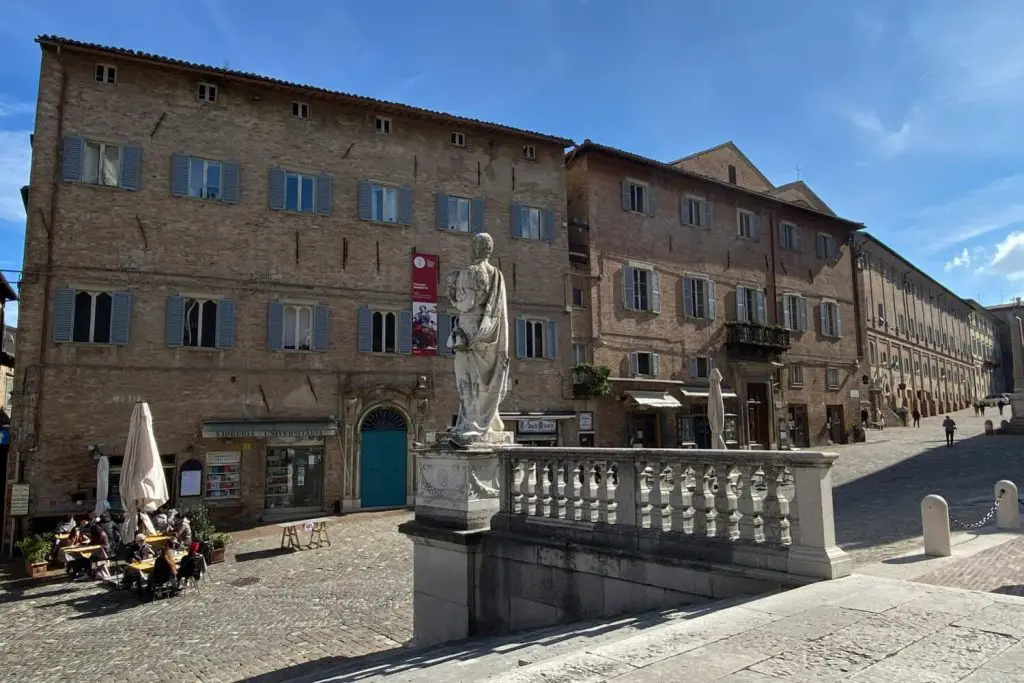
Casa Natale di Raffaello
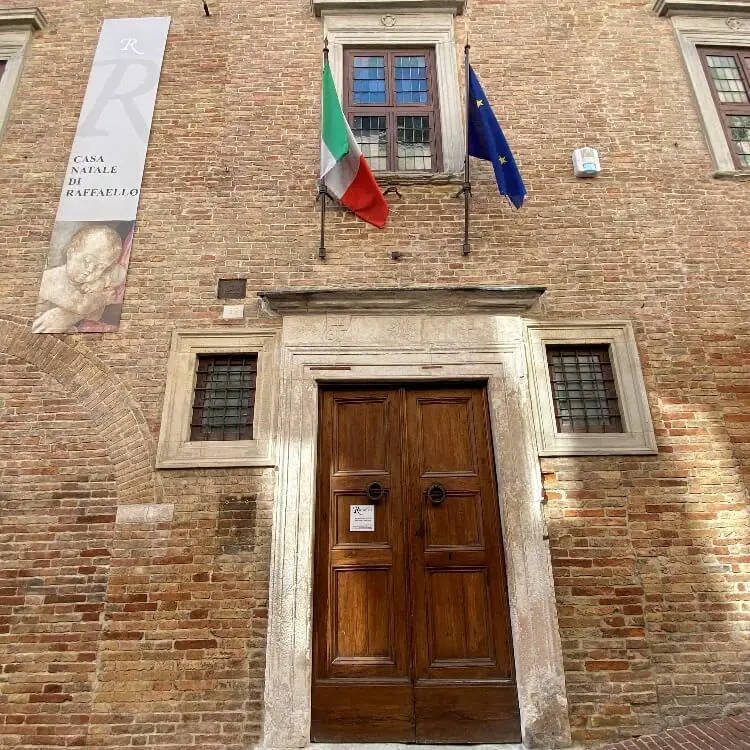
This 15th century house is where Renaissance artist Raphael was born in 1483. He spent the first 16 years of his life, having heavy influence from his father, Giovanni Santi, who was himself a court painter and taught his talented son everything he knew. Now a museum, the house displays copies of several of his masterpieces, and serves as a showcase of how Raphael and his family lived in those days.
Fortezza Albornoz
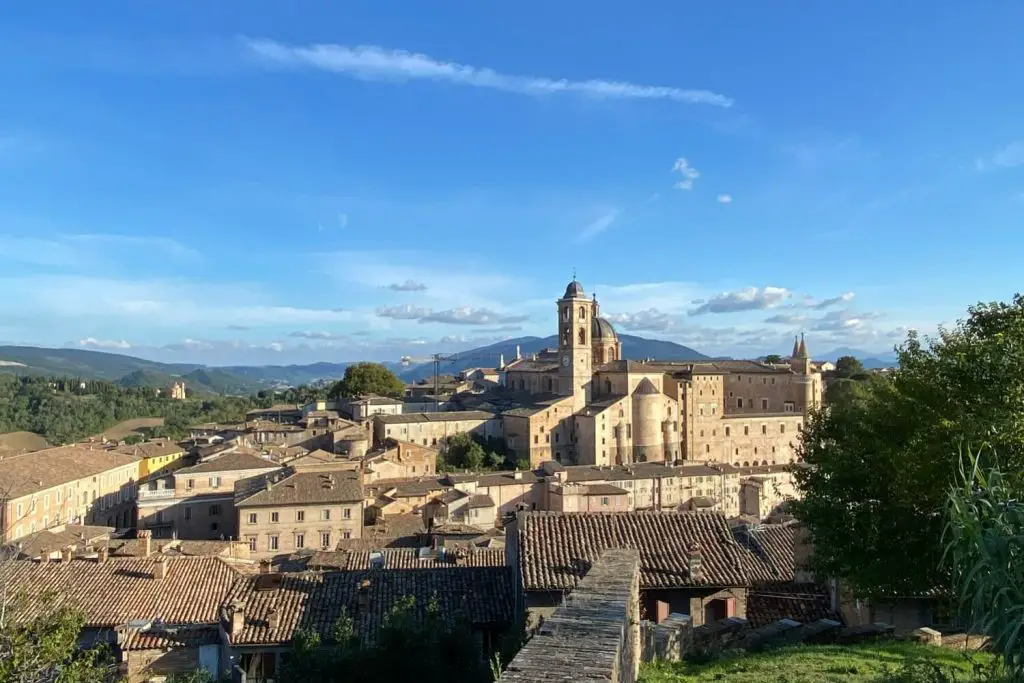
We chanced upon this space and were pleasantly surprised. It’s a large compound with unblocked views of the duomo and palace. There were many families and students hanging around on picnic mats just spending the weekend in a leisurely way. Standing proudly on this hilly place is a fortress that is closed to public.
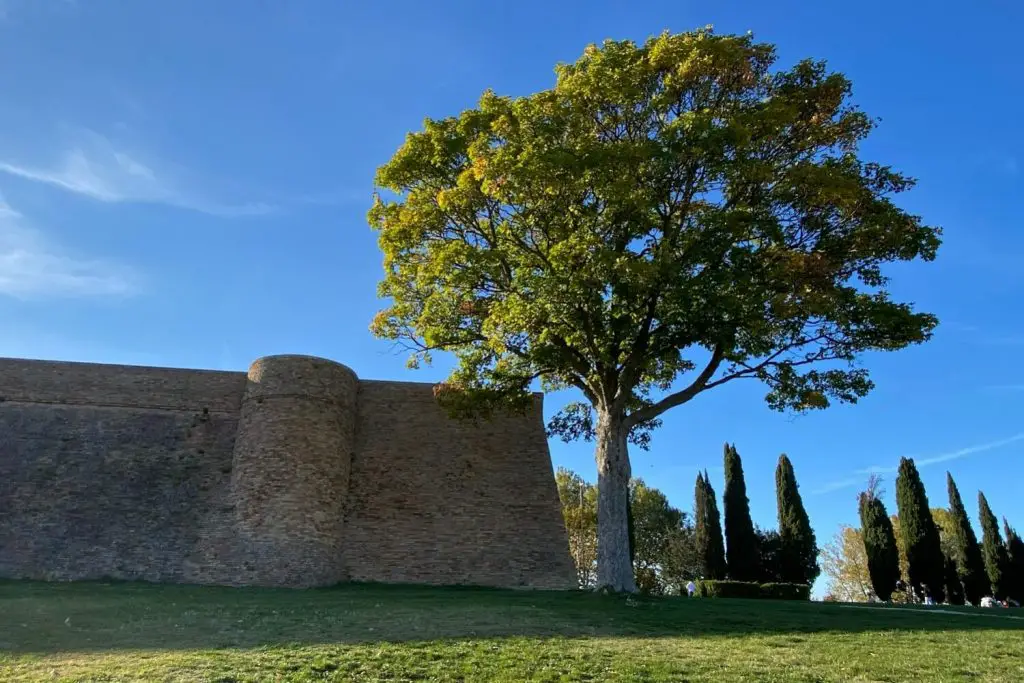
Monumento a Raffaello
This monument which is dedicated to Urbino’s most illustrious son Raphael, is located at the top of via Raffaello. Sculpted by Luigi Belli and completed in 1897, it illustrates the medieval town’s love and respect for the artist. Around this garden compound, you will find more marble and bronze monuments of many other artists and famous individuals who have honoured the city of Urbino.
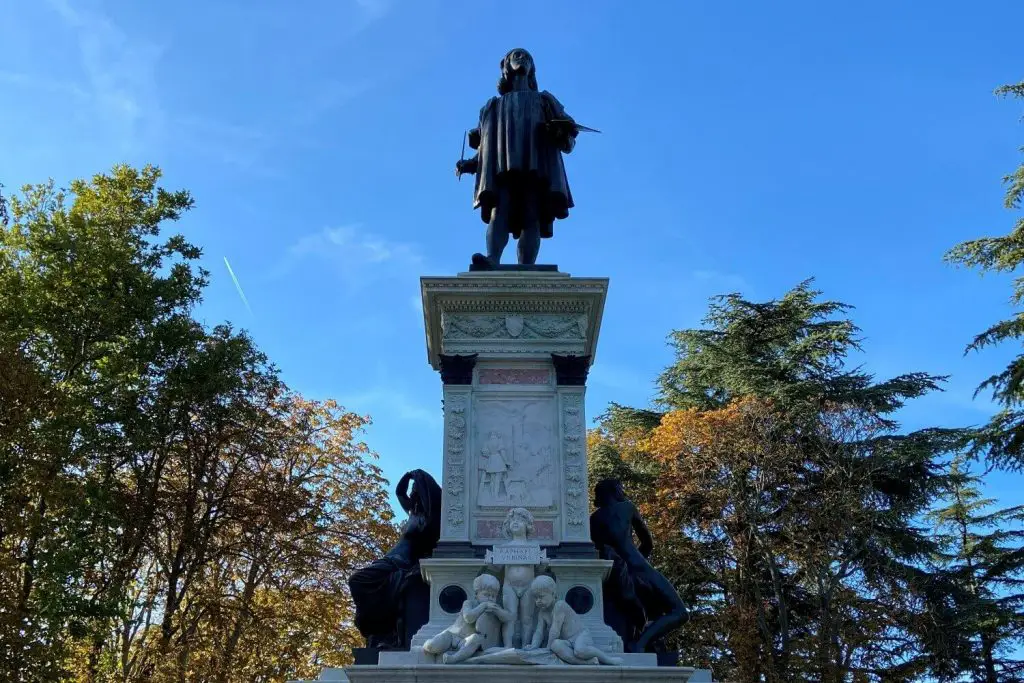
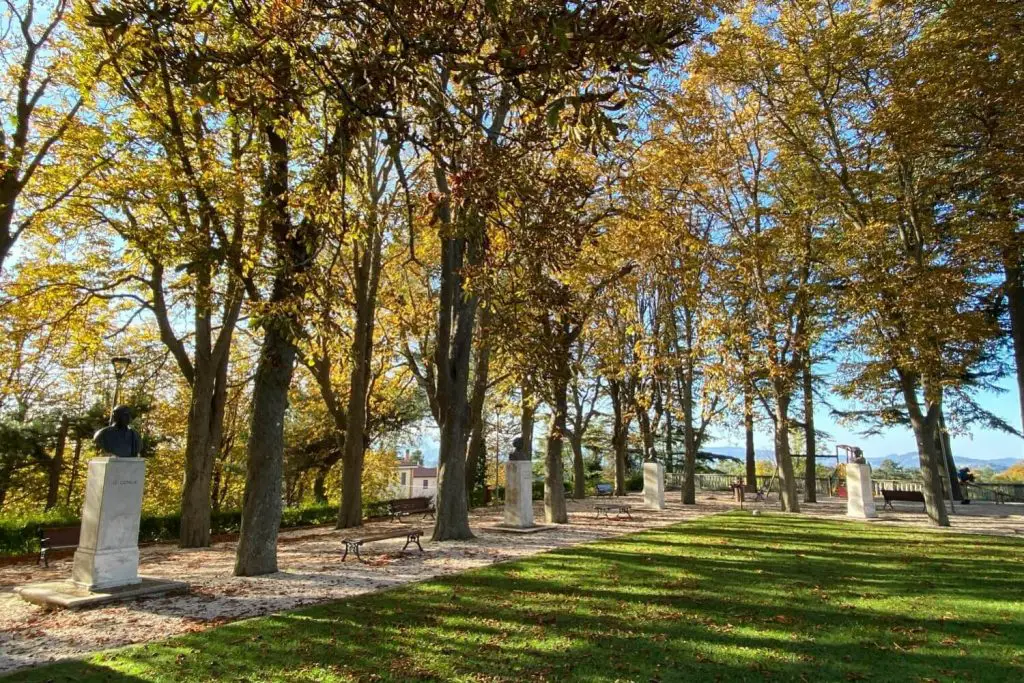
Orto Botanico (Botanical Garden)
The botanical garden was established in 1806 and today maintained by the University of Urbino. I really love the unique building facade and we spent some time admiring the medieval exterior.
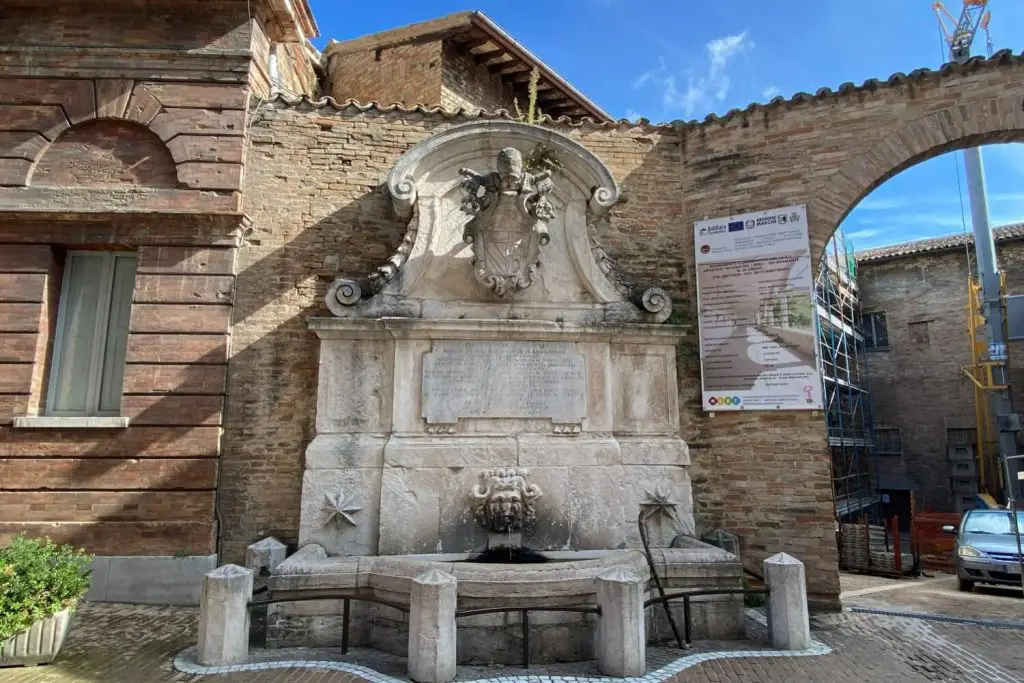
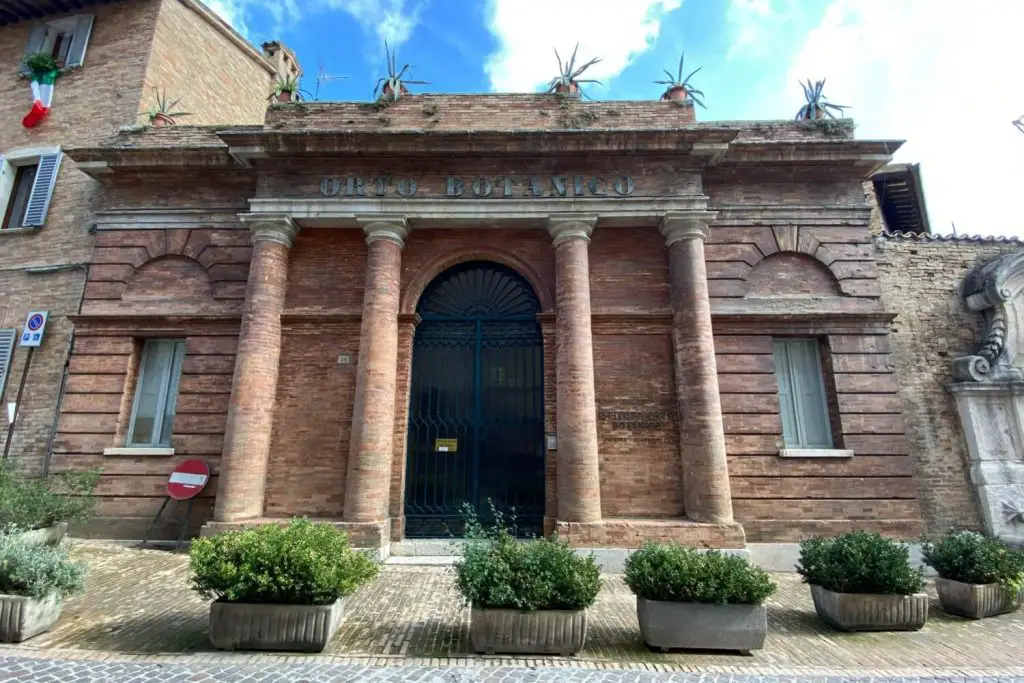
Churches
Like many medieval borgos in Italy, there are many churches of different sizes found all around Urbino.
Chiesa della Santissima Annuziata
A mysterious looking little church, we couldn’t find much information of it on Google Maps. Visitors are not allowed to enter but we can take pictures and view from the open door. This church displays the reproduction of the tomb of the famous Renaissance artist Raphael.
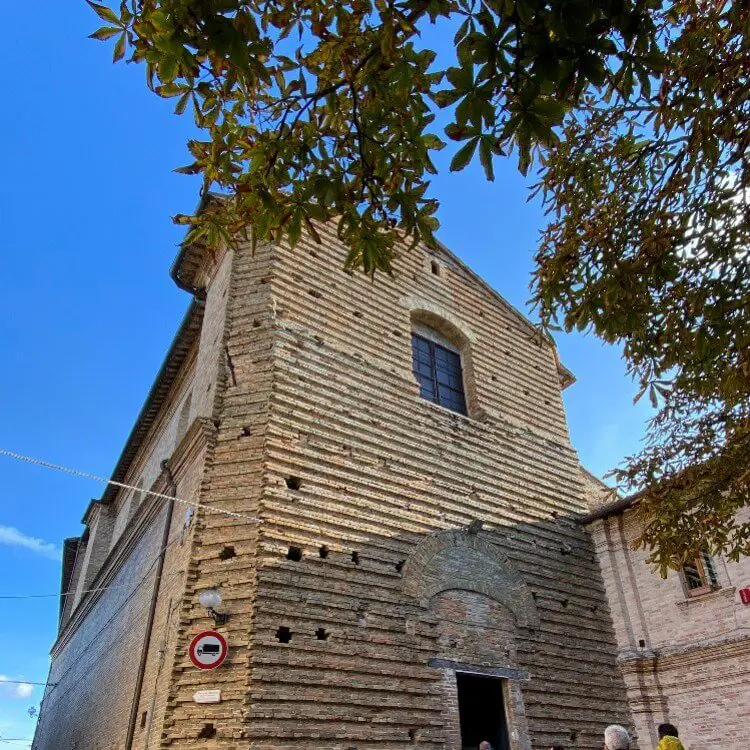
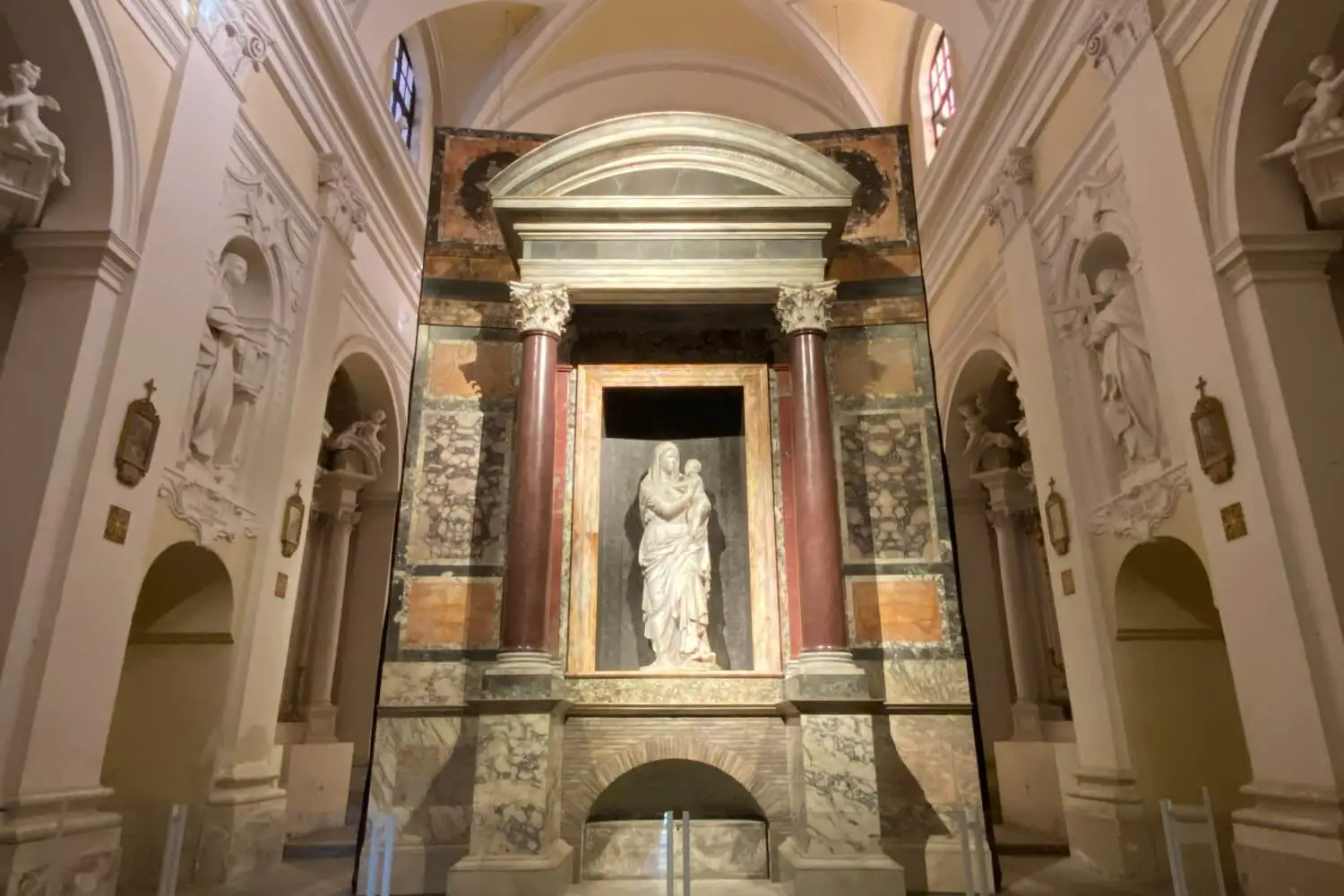
Chiesa di Santo Spirito
A really small church with its origin documented since 1554 with beautiful frescoes on the ceiling.
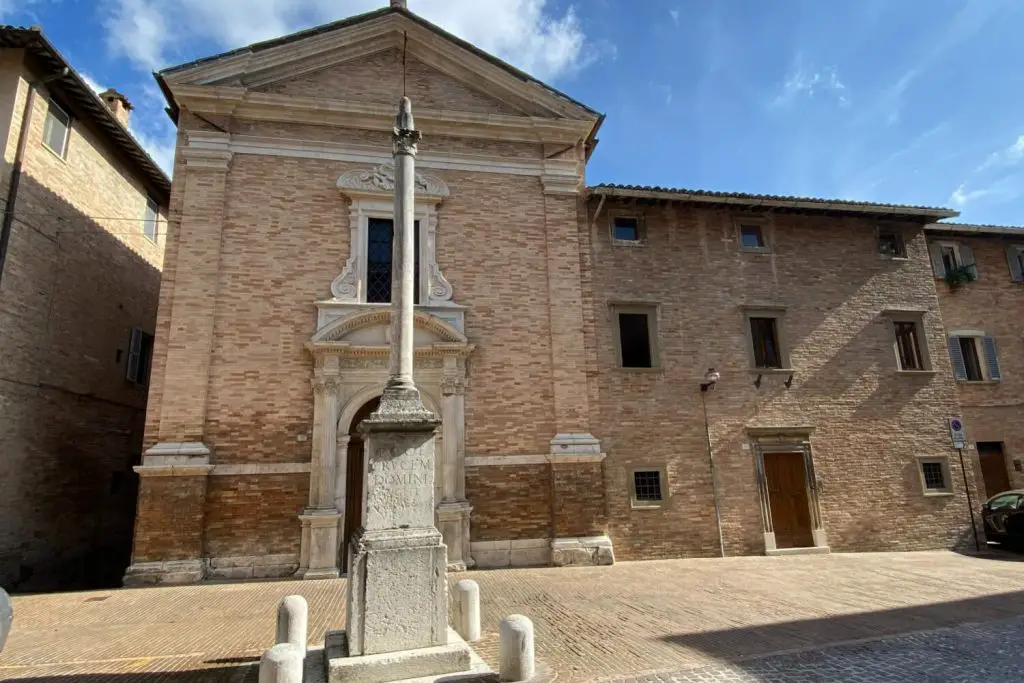
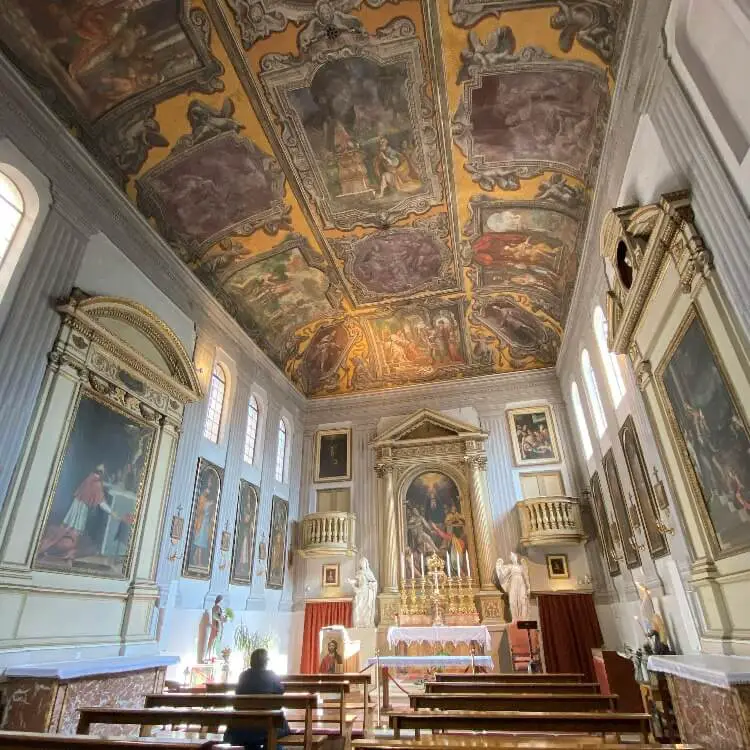
Chiesa San Francesco
This Romanesque-Gothic style church could have been easily missed as the front exterior didn’t look like a church at first glance. If you walked along the street, you can’t really see that there’s actually a bell tower at the back of the church. We caught the sign and went in for a quick look. It has its origins dating back to the second half of the 14th century.
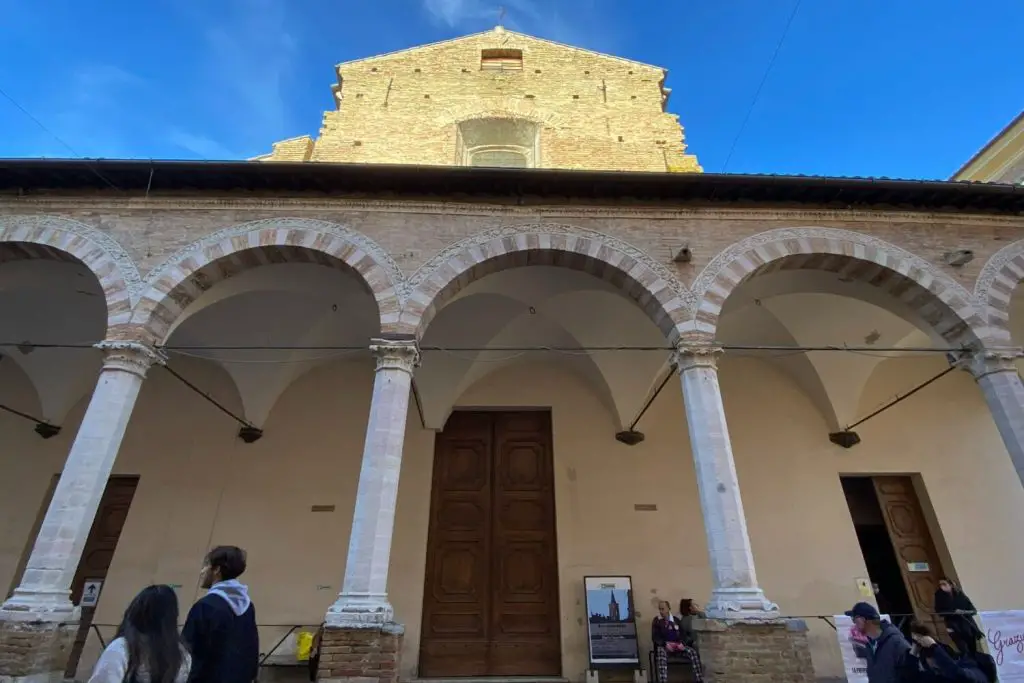
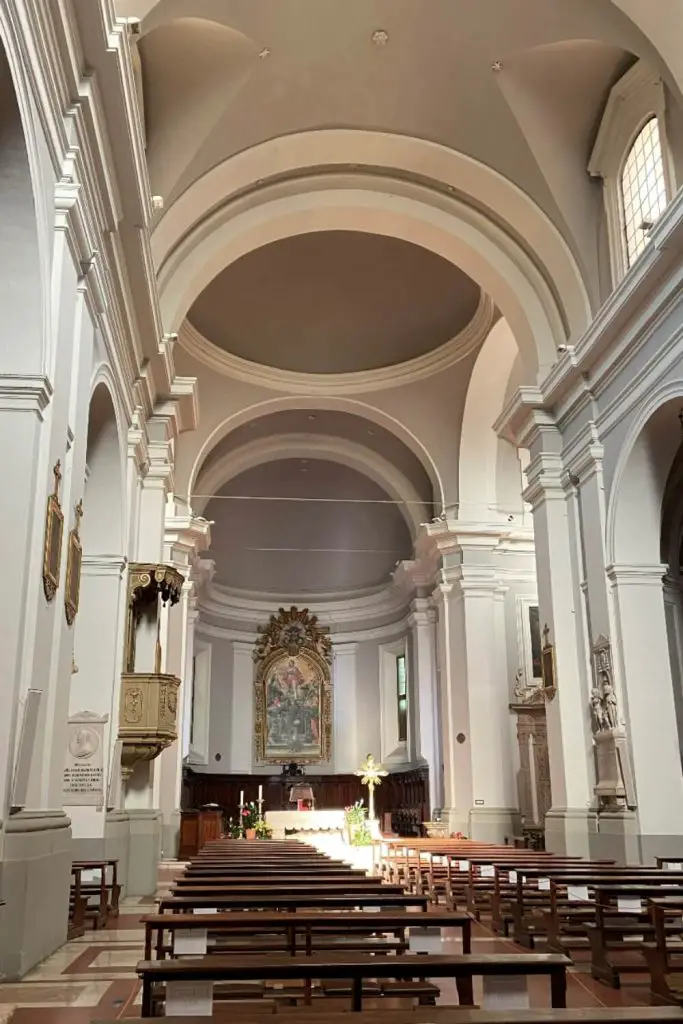
Church of Saint Dominic
Established by the Dominican community in the 1300s, two staircases from the sides lead to the main door. The humble interior appeared to be recently refurbished with clean walls and ceilings.
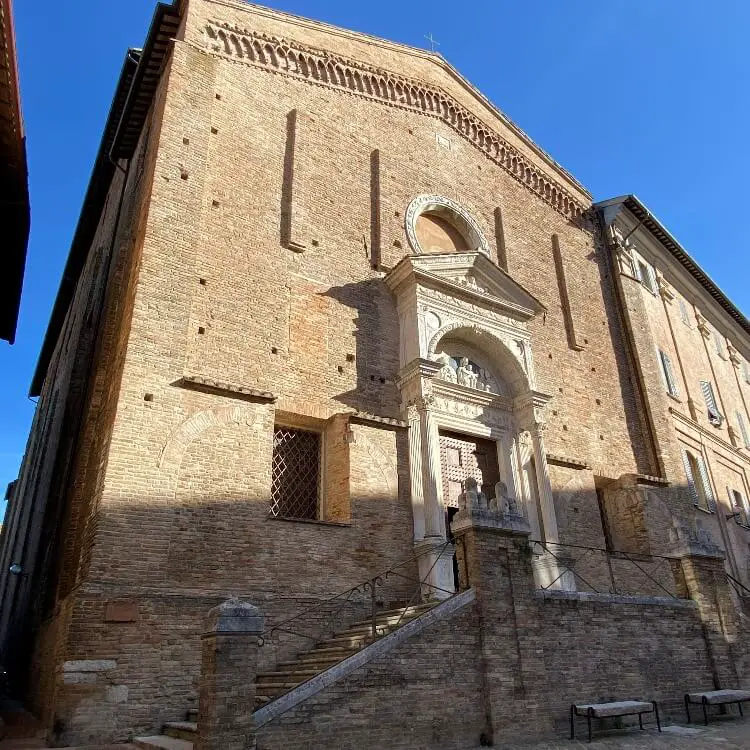
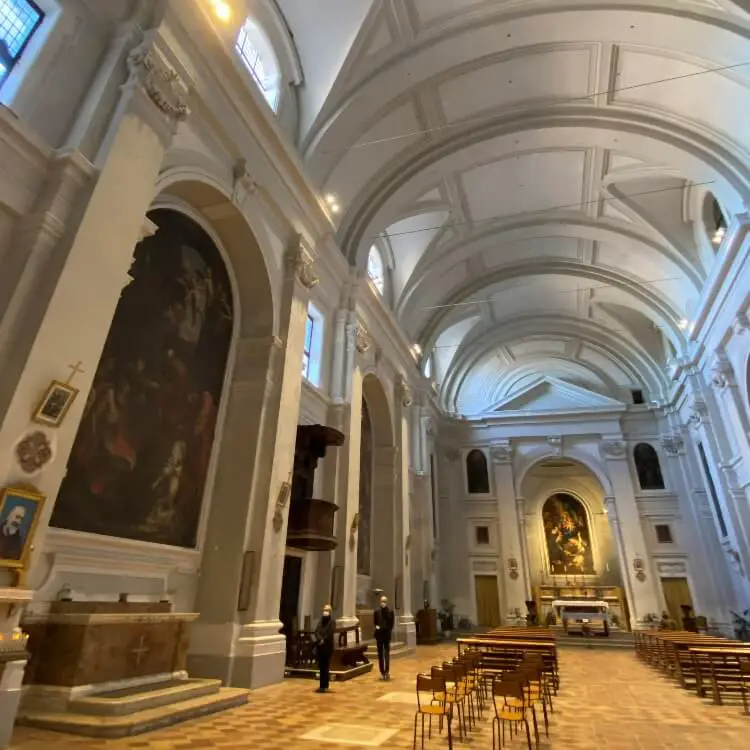
I made a habit to save the places to visit on Google maps, and I hope you will find it useful too.
For more day trip stories in Italy, do check out my posts on Parma, Assisi, Mantova, and Cascata delle Marmore.

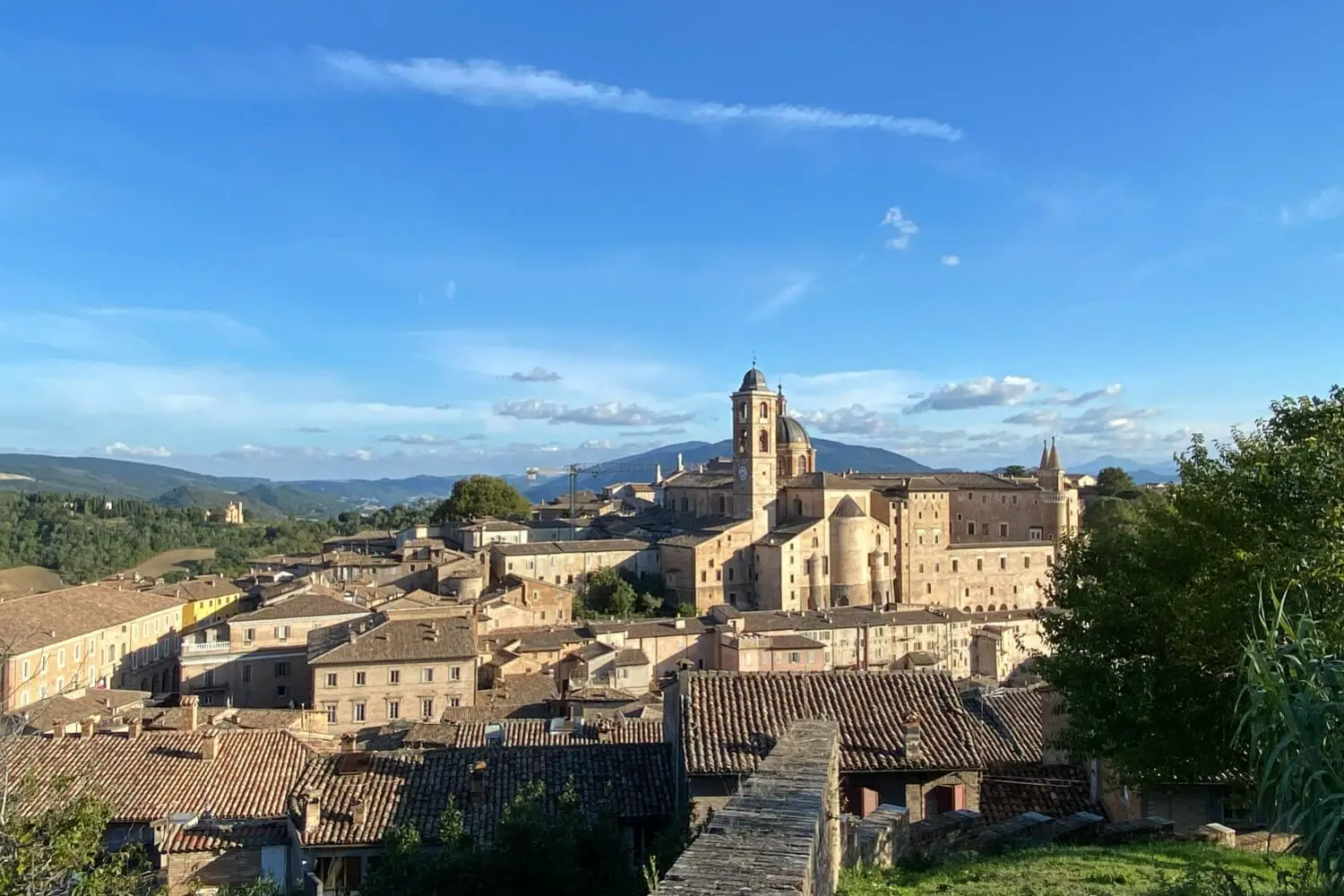
 Creamy Butter Chicken Recipe
Creamy Butter Chicken Recipe
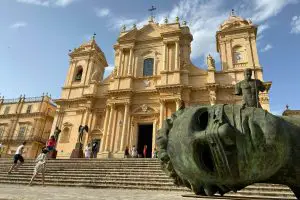






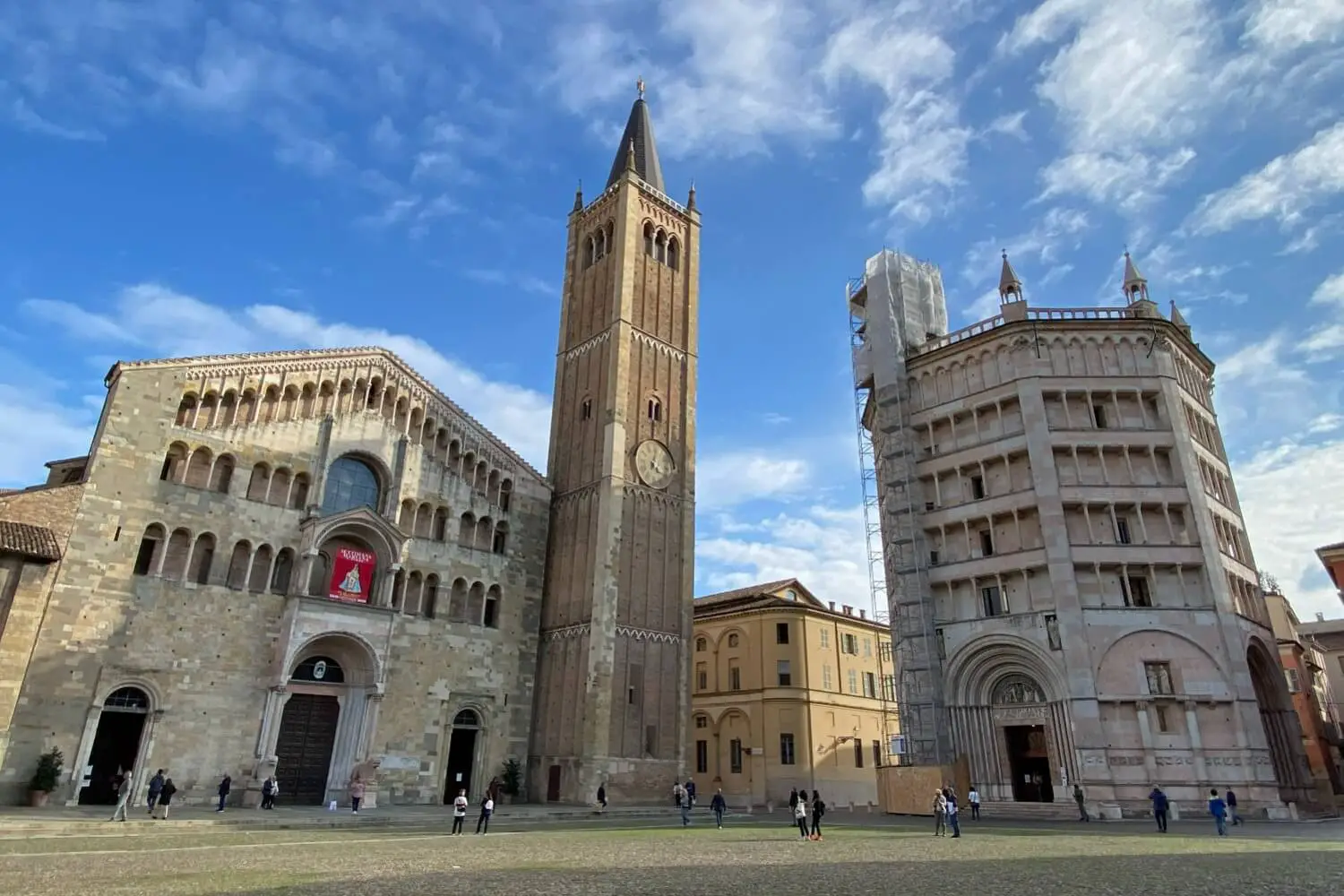

19 December 2021 at 1:03 pmGood commentary and the information shared will help in planning for short trips.
19 December 2021 at 6:15 pmSuch a nice place! In my check-list already 🙂 Thanks for your sharing!
22 December 2021 at 6:58 amThanks! Hope you will visit and surely like the place.
24 December 2021 at 9:29 amFinally can read something new about other tow. Italy is not only Rome, Florence, Venice.
27 December 2021 at 6:10 amThat’s true. There’s so many other beautiful places in Italy to explore. Thanks for reading this blog.
27 October 2022 at 6:25 pmHi Beautiful Voyager. Urbino is surely a beautiful place. I only wish I have more time to look around …..
Massimo
28 October 2022 at 9:49 amThanks Massimo for visiting. Yes agreed, it’s a very unique and beautiful place full of rustic charms. I’d love to go back to visit again.
23 November 2022 at 2:59 amThe post about Urbino was elucidating.
Art is one of the themes of a story I am writing. And in which there is an oblique reference to a church in Urbino.
Regards, William.
24 November 2022 at 10:00 amThanks for reading!